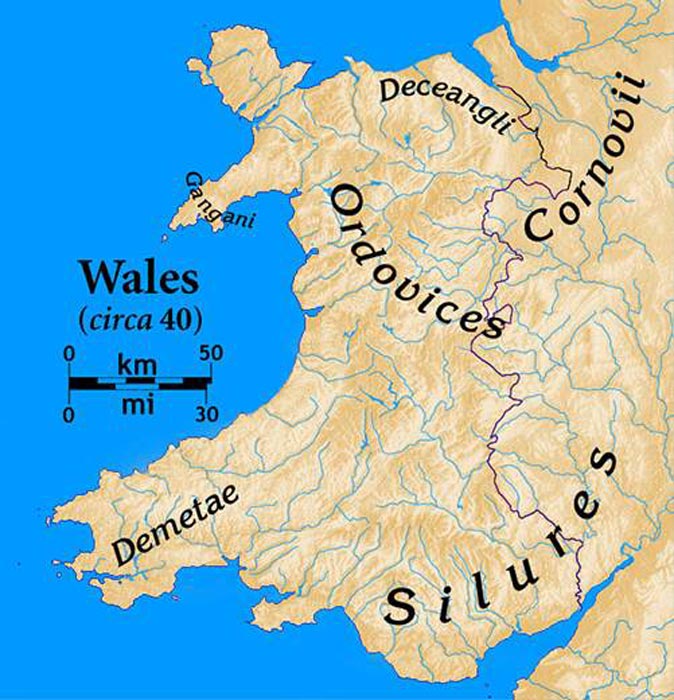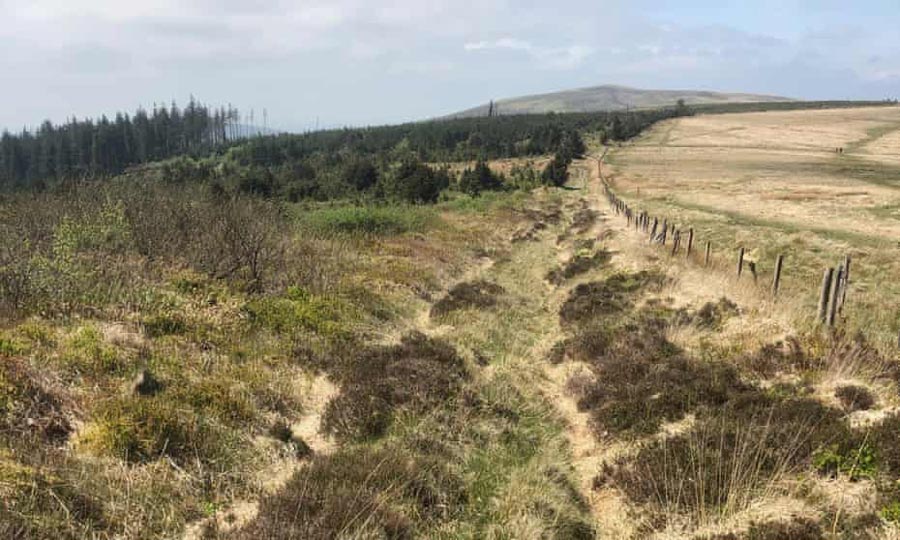Stonehenge’s Bluestone Tracks Discovered Beneath Roman Road
An Oxford University archaeologist exploring the Welsh countryside has discovered an ancient Roman road in Wales. He believes it might be the lost route upon which the bluestones were transported to Stonehenge from Wales. Furthermore, the discovery of this Roman road that connects villas and forts with silver mines also proves the Romans penetrated further into west Britain than previously thought.
Tracking the Bluestone Trail and the Roman Road
Last month Dr Mark Merrony, an archaeologist from Oxford University, identified the first sections of the 10.94 kilometer (6.8 mile) long Roman road buried in peat in the Preseli Hills, in Pembrokeshire, Wales. Measuring up to 5 meters (16.4 feet) wide, this hitherto unidentified Roman road is suspected to follow the same route that prehistoric people used to transport the bluestones to the Stonehenge site in England.
- Stonehenge Bluestone Stolen for Garden Ornamentation
- Treasure Hunter Finds the First Celtic Chariot Burial in Wales, Rewrites Ancient History
The term “bluestone” refers to the first stones raised at Stonehenge in England, which are still enormous in terms of manhandling. These stones came from the Preseli Hills in southwest Wales. The Stonehenge bluestones weighed between 2 and 5 tons (2,000-5,000 kilograms) each.
Last year The Guardian announced a team of scientists had determined that the bluestones used at Stonehenge had originated in Wales. A paper published in the journal Antiquity concluded that the bluestones had “stood at Waun Mawn [in Wales] before being dragged 140 miles [225 kilometers] to Wiltshire.”
Dr. Merrony told the MailOnline that a prehistoric route was being used during the Roman period, and that it could well be “the same route ancient people transported the bluestones down to Stonehenge.”

The last remaining standing stone from the stone circle at Waun Mawn, the rest of which, according to a recent theory, were transported from Waun Mawn to Stonehenge and it was part of this route that became the Roman road into Wales. (geograph)
From Irish Bronze Age Trading Route to Roman Road
Dr Mark Merrony, whose study will be published in the archaeology magazine ANTIQVVS later this month, explained that the road he discovered runs past a Roman silver mine and that it represents the real “Golden Road.” The MailOnline article says many hikers visit Pembrokeshire to walk the Golden Road. This seven-mile (11 kilometer) trail is believed to be a Bronze Age trading route for the movement of “copper, bronze and maybe gold items between South East Ireland and the bigger population centers to the east.”
The popular hiking road even features two of the “possible” quarry sites from which the bluestones were cut and transported to Stonehenge around 4,000 years ago. However, Dr. Merrony says this track “is in actuality a modern construct of less than a hundred years old.” The road he has identified is the “real Golden Road,” because it follows the shoulders of hills rather than over them, which the archaeologist says make much more sense for traders pulling heavy loads of wares.
A Roman Road Built by a Small Army of Workers
Dr Mark Merrony discovered that in 1698 Edward Lhwyd, a keeper at the Ashmolean Museum in Oxford, visited Wales and recorded an “old dyke,” near which Roman coins were found. Dr Merrony said that over a 50-year period all references to old “Roman roads” in the area were removed from ordinance survey maps. Notwithstanding, the researcher discovered two more antiquarian records noting ancient roads.
One of these entries was discovered to be a forgery, but when Dr Merrony explored the site he saw what he thought was a small overgrown canal that turned out to be a sunken pathway. “It takes the form of a camber, like a causeway, and you can see it is raised slightly,” said Merrony.
Merrony discovered evidence of paving and measured the road at 19.94 kilometers (6.8 miles) long and 5 meters (16.4 feet) wide, suggesting “hundreds of men worked on the road, possibly from an army.”

The Roman road into southwestern Wales was likely not heavily fortified because the local Celtic Demetae tribe “were thought to have been pro-Roman.” This map shows the region when the Romans ruled Britannia. (CC BY-SA 3.0)
New Insights Into The Extent Of Roman Britain
Dr Merrony claims that if there was a silver mine positioned on the Roman road to Wales it is likely that the ancient Romans would have exploited it. However, the mainstream view in the British archaeological community is that the Romans didn't venture this far west into Wales. But going against that grain, the discovery of this Roman road proves, clearly, that this dogmatic assumption is flat out wrong.
- Monumental Discovery! More of the Stonehenge Origin Story Comes to Light
- The Where, When and How of Quarrying Stonehenge 'Bluestones' Is Revealed in New Report
While evidence of a fort appears along the Roman road, Dr Merrony said it may not have been necessary for the Romans to have a large military presence in this area. He reminds us that the Celtic Demetae tribe, who inhabited modern Pembrokeshire and Carmarthenshire during Late Pre-Roman Iron-Age “were thought to have been pro-Roman.” The Demetae tribe inhabited a territory roughly equal to the modern county of Dyfed and much of Carmarthenshire in southwest Wales.
Top image: A Roman road found in west Wales was the same road used to transport bluestones to Stonehenge according to the latest research. Source: Mark Merrony / Oxford University
By Ashley Cowie




















Comments
"the discovery of this Roman road proves, clearly, that this dogmatic assumption is flat out wrong."
I love the word "dogmatic:" it conjures up all sorts of images in my mind
Is it allowed to say BS on this website?
"transported to Stonehenge around 4,000 years ago"
How do the clever people know that the it was 4000 years ago, for absolute certain, when stone is not organic and therefore not, by itself, data-able?
My partner has just asked me: WHY?
Somebody help me out here, please? How many people does it take to "drag' 5000 Kilo's from Wales to Wiltshire?
Pages